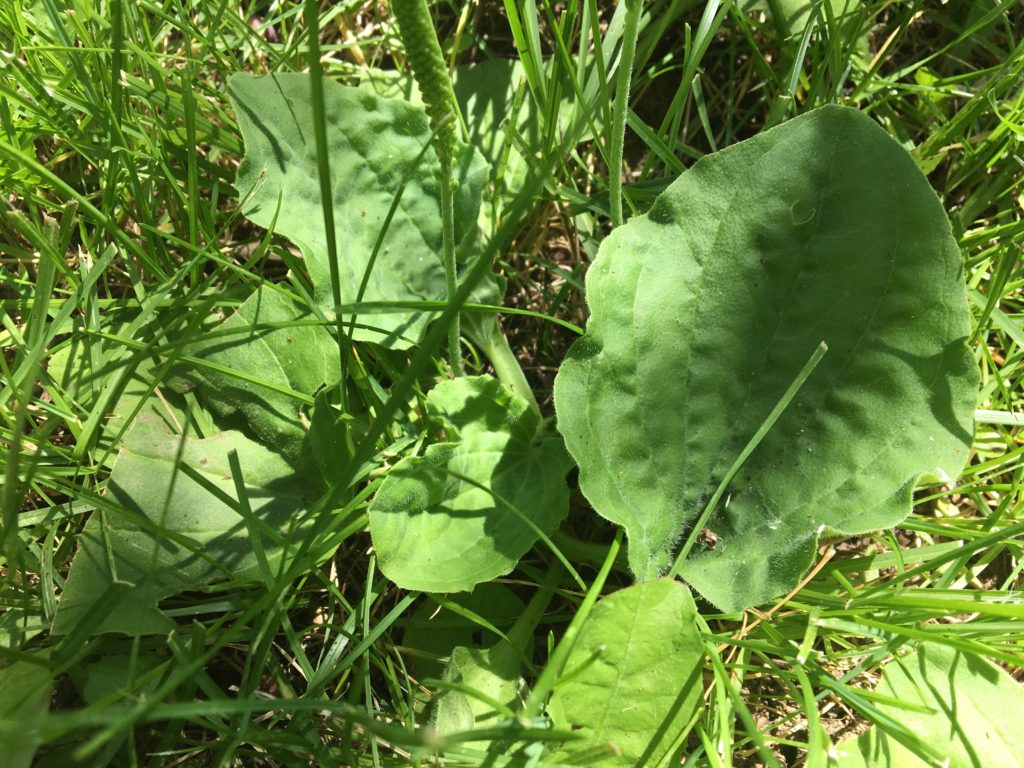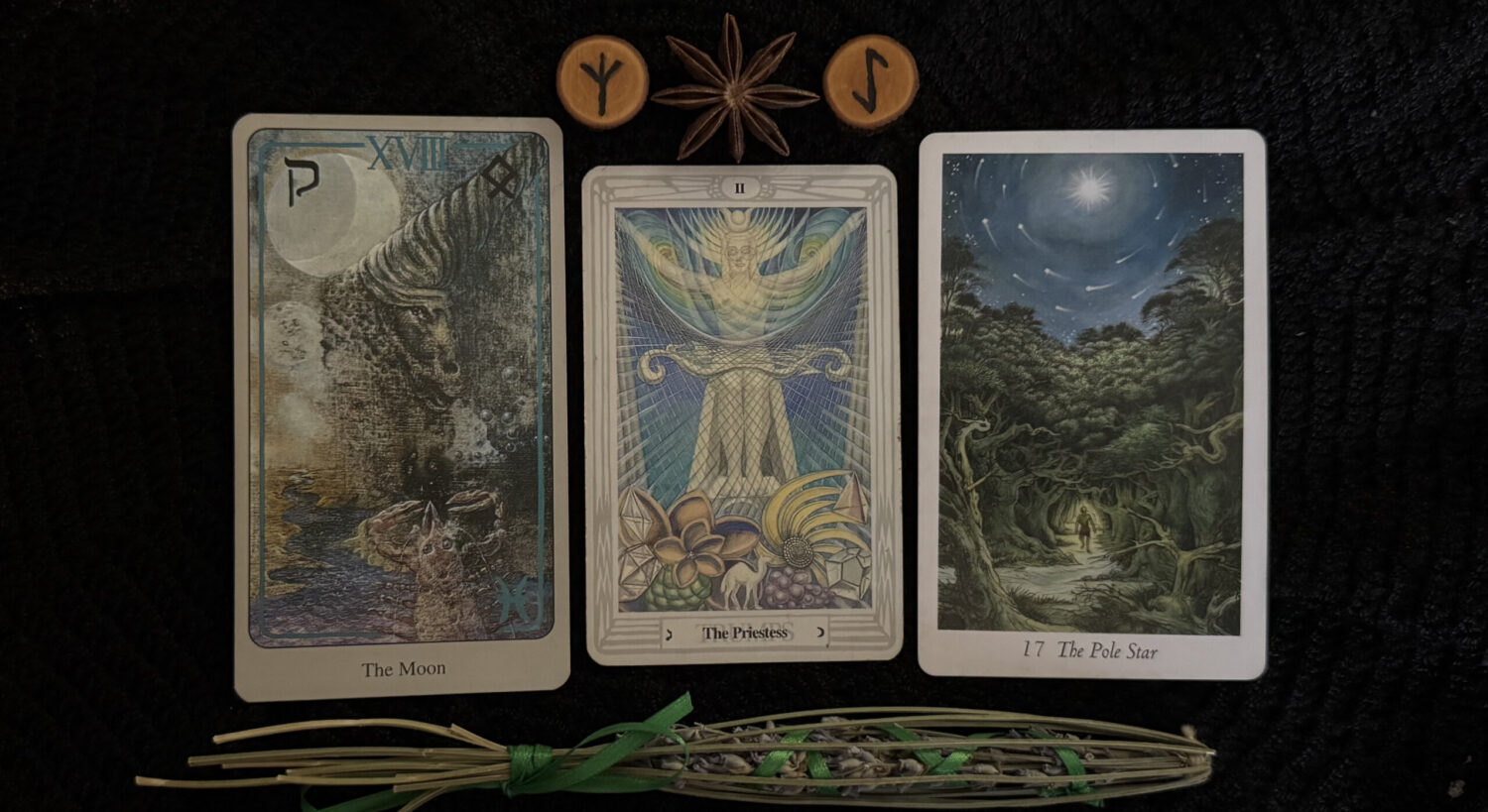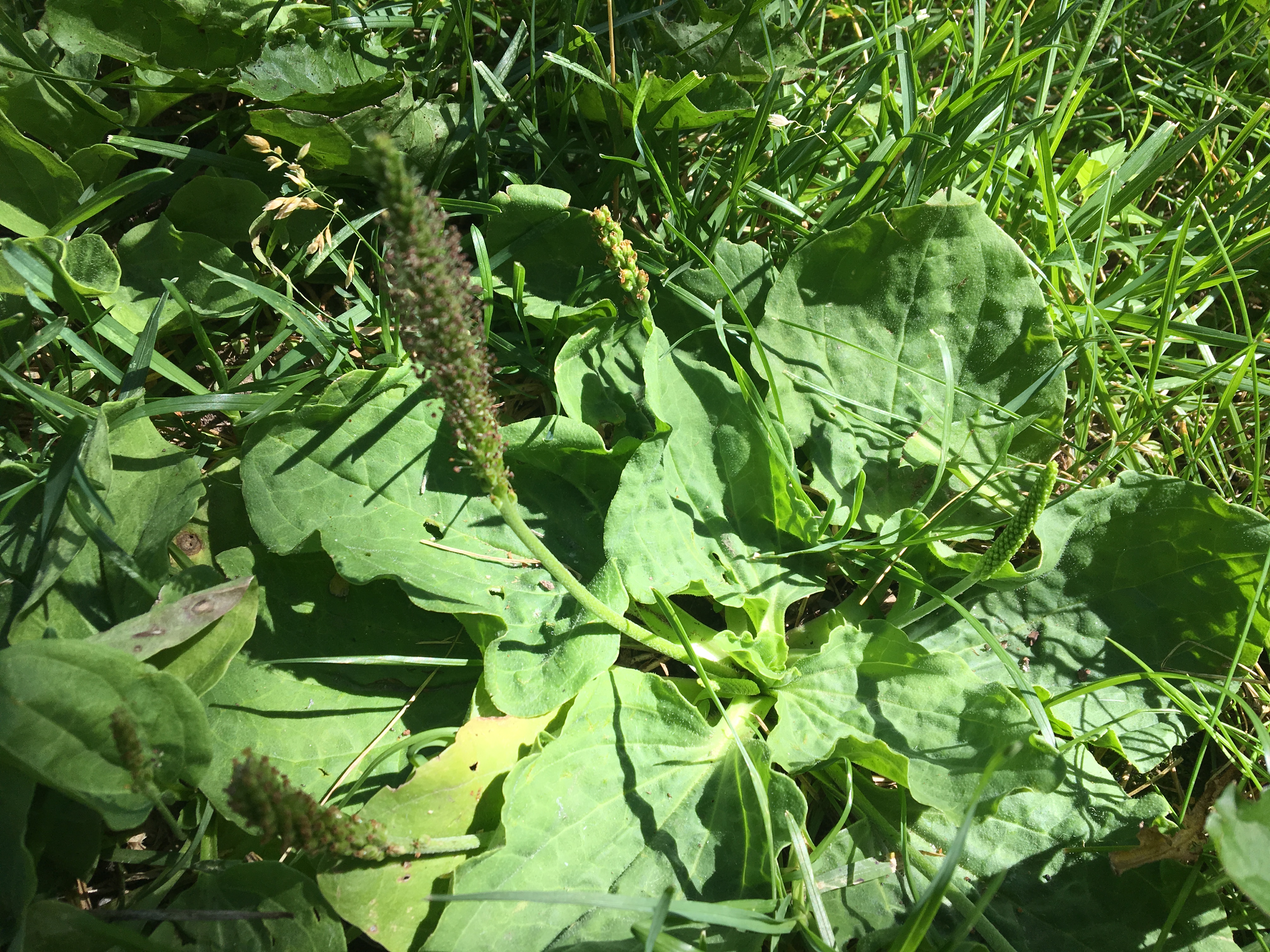If you’re like me, you look for any number of healing plants growing in your yard. Plantain is one such plant. Whether it’s the broad-leafed variety or the slender leafed plant, Plantago major‘s astringent properties are perfect as an expectorant and diuretic. Its demulcent action also soothes inflammation and heals wounds of all kinds, and plantain, along with comfrey, is my go-to instant remedy for mosquito and other insect bites. Plus, it’s wonderful as a cooling summer spray.

Plantain can be used in liniments and tinctures as well as in tea blends. Soaked in olive oil for a month or so yields a nice oil that can be turned into a salve for inflamed or irritated skin. The large leaves of the plant can be bruised and laid over insect bites or bee stings, or on irritated skin as well. But in a pinch, I typically chew a couple of small leaves and along with some spittle, I place it on the bite or sting as a quick poultice. Plantain draws out poisons and foreign objects such as splinters and has been used as a folk remedy by healers forever.
[wordads]
Plantain tincture may be swished in the mouth to draw out toxins from inflamed teeth and for respiratory complaints, Matthew Wood notes that
Plantain has an affinity to all mucus membranes, which it cleanses and disinfects, just as it does the skin. For this reason it has been used for respiratory inflammation. It lessens irritation, cools, lubricates, and removes phlegm. (Wood, p. 393)
I created a tincture this morning from some plantain I gathered from my front yard. Since it’s fresh plant material that I used, I poured grain alcohol over the plantain to soak for two weeks to a month after which I’ll strain and bottle it up for future use. Grain alcohol is nearly 100% alcohol, so the final tincture must be diluted before use. I typically use distilled water and shoot for around 30% alcohol when I’m finished.

Fresh plants contain a variable amount of water so grain alcohol is used instead of vodka as the menstruum. Otherwise, especially if the plant has a high water content, the finished tincture may not have enough alcohol in it to act as a preservative. And given that I use the simpler’s or folk method for tincturing, the ratio of alcohol to water is never exact. Ultimately, I fill a dropper bottle a little less than half full with non-diluted tincture and add distilled water just to the lip. Screw on the dropper and shake and voila! I have a lovely plantain tincture that I can use both internally and externally.
[wordads]
Now, if I’m only making a liniment, I use rubbing alcohol because there’s no reason to use expensive grain alcohol for a liniment. Since I’m not ingesting it EVER, I prefer to use rubbing alcohol as well as witch hazel to create my liniments. But in an emergency, if I have plantain tincture and nothing else, I use it the same way as I would liniment.
So, the next time you go on an herbal walkabout, look for some plantain. Gather some along with some dandelion leaf and make yourself a cup of healing herbal tea!
Until next time…
Herbal Blessings to all!
References
- Hoffmann, David. Holistic Herbal: A Safe and Practical Guide to Making and Using Herbal Remedies (Kindle Location 7068). HarperCollins Publishers. Kindle Edition.
- Wood, Matthew. The Book of Herbal Wisdom (p. 393). North Atlantic Books. Kindle Edition.
If anyone intends to either quote something I've written, or intends to post any part of my work, including my videos, on any other site, please ask permission before doing so. Any reposting of my work without permission can be considered as copyright infringement, so please ask. And if I give permission, you MUST clearly reference my name as author and my website. No exceptions. The words an author writes are sacred. Unapproved use is not.
Thank you... Jan Erickson

